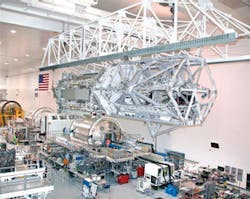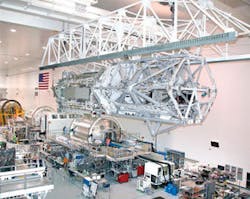Boeing-built truss provides increased electrical power to International Space Station
By Courtney E. Howard
ST. LOUIS - Astronauts aboard the U.S. Space Shuttle Atlantis have installed a truss element, built by Boeing Co. engineers in St. Louis, to provide additional power to the International Space Station (ISS).
The Starboard 3 (S3) and Starboard 4 (S4) truss element incorporates batteries and solar arrays that provide electrical power to the ISS continually, including those times when the station is eclipsed by the Earth’s shadow.
“The S3 and S4 Boeing hardware provide a much-needed boost in power, as well as balance out the spacecraft when attached to the starboard side of ISS,” explains Mike Raftery, Boeing Space Exploration ISS deputy program manager.
The astronauts employed training from Boeing engineers and the help of two robotic arms during the seven-hour installation. The procedure included removing hardware from Atlantis’s payload bay, transferring it to the space station using the shuttle’s robotic arm, and attaching S3 and S4 to the starboard (right) side of the station.
The truss has two solar arrays for obtaining power from the sun, a solar rotary joint that keeps the arrays permanently pointed toward the sun, and 12 batteries to power the station during times it cannot receive sunlight. The new arrays contribute roughly half the station’s total power output of 50 or 60 kilowatts.
“At 35,678 pounds, the S3/S4 truss assembly is the largest space station cargo that the U.S. has flown to date,” Raftery continues. “Each battery is as big as a large suitcase, and the solar arrays will provide a total operating power capability of about 20 kilowatts, equivalent to the power used by 16 typical U.S. homes at any given moment.”
The S3/S4 truss element is the second of 11 planned starboard additions to the outpost’s integrated truss structure. When completed, the structure will span more than 300 feet and deliver power, data, and temperature control for the station’s electronics.
“This mission is another step closer to completing the assembly of the International Space Station, and Boeing continues to play an important role in one of the most challenging engineering feats ever attempted in space,” says Brewster Shaw, vice president and general manager for Boeing Space Exploration.
Boeing, NASA’s prime contractor for the orbiting outpost, is responsible for the design, development, integration, testing, and delivery of U.S.-built elements for the ISS.

